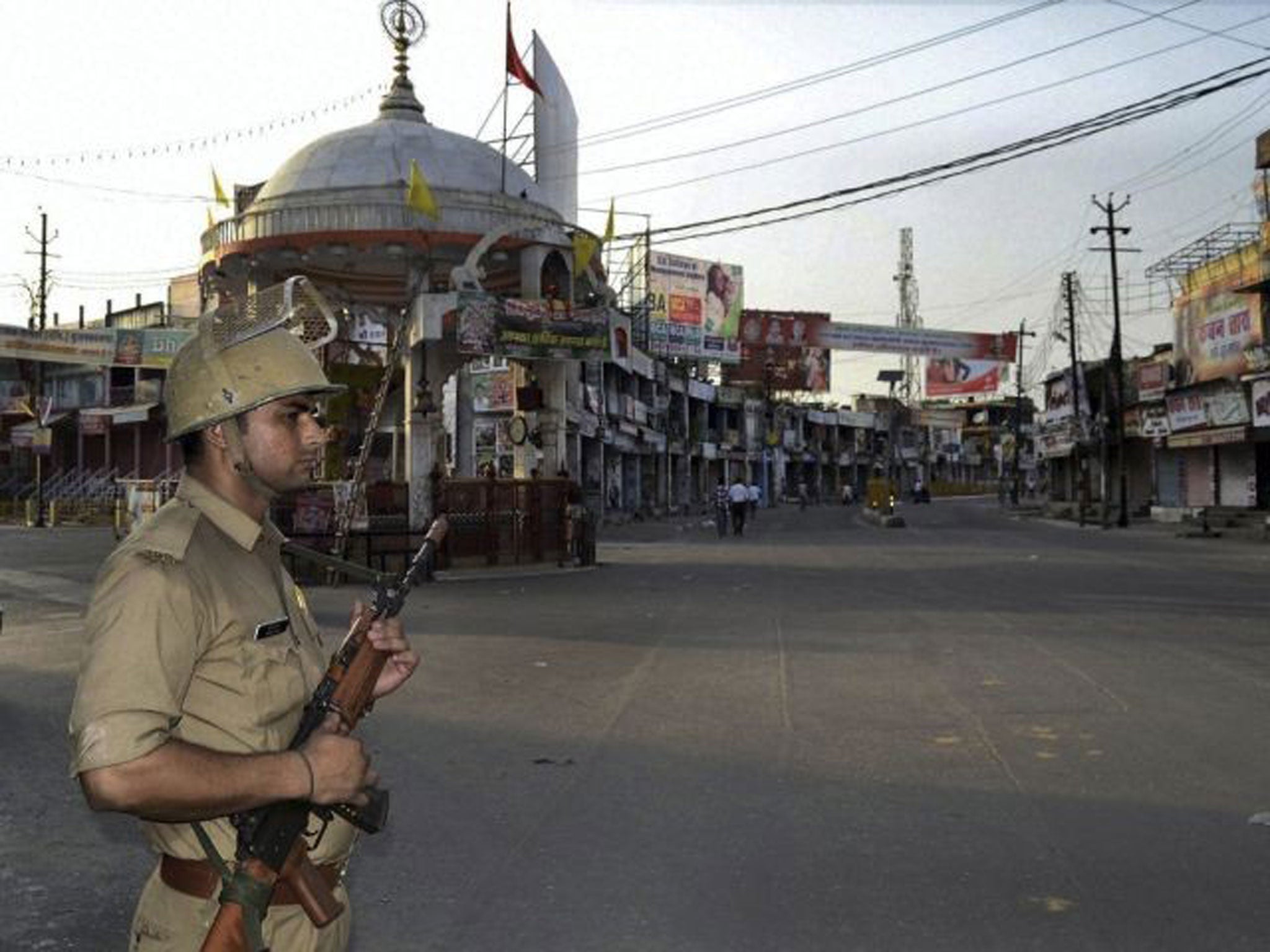Troops called to restore order in north Indian town of Muzaffarnagar after dispute between Hindu and Muslim escalates into deadly riots
A minor argument between two men has developed into Hindu-Muslim clashes

Hundreds of troops have been dispatched to restore order in a north Indian town after clashes between religious communities left 12 people dead, among them a part-time cameraman shot by a mob.
Up to 800 soldiers as well as paramilitary police were conducting searches and enforcing a curfew today in the town of Muzaffarnagar, about 90 miles north-east of Delhi.
The clashes began 10 days ago when a seemingly trivial incident in a village between two men, one Hindu and one Muslim, escalated and resulted in the killing of three people. Tensions between the communities had been simmering since then and on Saturday a further nine people were killed and many more were injured as tens of thousands of Hindu farmers led a march, demanding justice for those killed earlier.
Kaushal Raj Sharma, a local government official, told the Press Trust of India: “Twelve people have been killed in the clashes and the toll is expected to rise as some people are missing. The police are searching for them.”
Clashes between religious communities are not uncommon in India. But small localised incidents are often fanned by local politicians or groups to suit their ends.
Analysts said the violence in Muzaffarnagar was taking place against the backdrop of preparations for a national election, due to be held by the spring. Uttar Pradesh is the most political important of the Indian states, returning 80 of the 543 elected members of the lower house of the parliament.
In the aftermath of the violence, various political parties have accused one another of trying to stir tension for their gain. The Samajwadi Party (SP), which controls the state government, has accused the Bharatiya Janata Party (BJP), the main opposition party, of “engineering riots”.
The BJP, whose leader Narendra Modi, is tipped by many as a possible prime minister, have hit back, accusing the SP of trying to appeal to Muslim voters and creating agitation ahead of the election.
The Congress Party, which heads the federal government but is desperate to improve its current poor standing in Uttar Pradesh, said the SP needed to do more to stop the violence.
“The election has a lot to do with this,” Ajoy Bose, a writer and analyst, told The Independent. “It’s a specific incident that starts it, and then the whole thing gets blown up.”
Reports in the Indian media said the trigger for the clashes may have been a collision involving two motorcycles in Kawal, a village near Muzaffarnagar. There are also reports that women of one community were harassed by men from another community.
A senior police officer, Deo Raj Nagar, said two people had been charged with trying to incite violence in the village.
Among those killed on Saturday was Rajesh Verma, a part-time journalist and cameraman with the Hindi news channel IBN7. He was apparently hit by a bullet as he was filming and died later in hospital. Another man, identified only as Israr, who had been hired by police to photograph the day’s events, was reportedly beaten to death.
Subscribe to Independent Premium to bookmark this article
Want to bookmark your favourite articles and stories to read or reference later? Start your Independent Premium subscription today.

Join our commenting forum
Join thought-provoking conversations, follow other Independent readers and see their replies